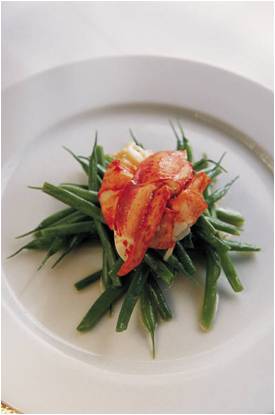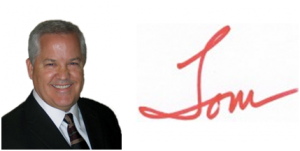 Congratulations!
Congratulations!
If you have gotten this far then you already spotted an important need for competitive intelligence, identified a senior leader that cares about it and managed to get the assignment to address the need. Even better than that, you worked into the discussion the topic “competitive intelligence.” Whether or not it really registered with your leader could be debated. They may have simply been glad to offload a difficult subject to a willing soul. Their expectations are low (and you should have tried to set them that way) but you have started toward a vision that will now become clearer soon.
More importantly, you have begun to set a people oriented tempo to your work.
You are recognizing (or at least hoping) that competitive intelligence will touch important areas for leaders in the company. CI analyses will show how well competitors are doing and sometimes how poorly your company is performing.
Meanwhile, leaders and peers are invested in how things are going. They set in place strategies that they think will be effective. And your work will eventually help them be more successful. However, that time is in the future. Between now and then is a minefield of egos, insecurities, turf wars, differing philosophies and more. Don’t worry too much, you can get through it. I’ll help you.
What’s next in our slow march to introduce a successful competitive intelligence program into the organization?
You tease them.
There is more than one meaning for “tease.” Sometimes I tease my children in a humorous way. I am trying to be funny and share a laugh with them. This isn’t what I would do in the office. Rather, a “tease” there is more like a small bite of an appetizer that is fine when tasted but provokes an even stronger desire for what might be coming. The small bite makes you lust for a full meal.
Why tease the leader in your response? There are two reasons.
 First, you aren’t ready to serve them a “full meal” of competitive intelligence. The full meal definition will become more apparent as we continue our discussion. Suffice to say that when you only have an appetizer, then you feature the appetizer. Remember that your leader does not expect much so one especially good serving of anything will probably delight them. Don’t overpromise.
First, you aren’t ready to serve them a “full meal” of competitive intelligence. The full meal definition will become more apparent as we continue our discussion. Suffice to say that when you only have an appetizer, then you feature the appetizer. Remember that your leader does not expect much so one especially good serving of anything will probably delight them. Don’t overpromise.
Second, even if you have everything ready (e.g., comprehensive information, immaculate presentation, credible strategic recommendations, solid quantitative and qualitative backup, etc.), it will not be accepted by an unsuspecting leader. They simply are not likely to be ready and you will actually damage your credibility if you attempt to “force feed” them. Don’t over deliver.
Here is what is in the “tease”
You goal is to begin establishing a pattern that will characterize all of the competitive intelligence things that are to come. The pattern will eventually lay the foundation for your personal competitive intelligence brand. (There are more things in the foundation but some are very important to start early.)
Here are three things to tease your leader
Do these steps well and you may just earn another bigger competitive intelligence assignment.
 1. You will state the problem using their language and their measurements of success.
1. You will state the problem using their language and their measurements of success.
Why? Because you want to be known as someone that attempts to understand the larger problem from the leader’s perspective. It is possible that you won’t get this exactly right the first time. However, the attempt will be noticed and if it leads to discussion, your standing will increase in the leader’s eyes.
Assuming that you are presenting information in a slide format, a practical way to do this is make the first slide a summary of the key question and the success metric for the business.
 2. You will demonstrate superior collaborative skills.
2. You will demonstrate superior collaborative skills.
How? You will do this by showing that you talked to other key people about the topic. Sounds simple and some people assume that this goes on all the time. The all too common problem is that it doesn’t. You will be different. You will canvas people on all sides of the topic, inside and outside the company. Their feedback (even their dissent) will be included and credited in your presentation. You will be the honest broker of information.
A simple approach is to include a list of contributors on the title slide. Also, at key points in your presentation, you can point out who provided key inputs. Aside from showing how you collaborate, you want to indirectly stroke those that helped. You’ll need them later.
 3. You will show evidence of interpretation.
3. You will show evidence of interpretation.
Many people will focus on the “what” question. That is, what is happening? The answer is presented exhaustively as a set of facts. That good as far as it goes but a senior leader has way too much “what“ information and precious little “so what” interpretations. Again, you will be different. You will try to give the meaning to the information that you have uncovered.
Expect that there will be discussions and disagreements with your meanings (this is actually a very successful outcome). Your bona fides have not been established yet. Nonetheless, simply trying will make you stand out.
There is so much more to do. That’s why the three steps that I have outlined are only a tease.
You might decide on three different steps for your tease. Whatever you decide, the important concept is to preview what is to come, to introduce new things in ways that are easily accepted and engage your leader in such a way that they will ask for more.
It is worthwhile to sketch all of the other things that will guide you over the next few months. That’s a more complete foundation than the simple tease. That’s the menu for the full meal. Ah, I can almost smell it now.
Next topic is “Frame the Foundation”.
Here are the 15 steps that we are walking through. Do you see something that is missing?
The Human Side of Competitive Intelligence
- Find The Pain
- Get The Job
- Tease The Vision
- Frame The Foundation
- Setting Some Standards
- Introduce The Brand
- Accumulate The Tools
- Back To The Vision
- Secure The Budget
- Build The Presence
- Expand the Brand
- Go For the Value
- Recruit A Staff
- Go On The Offense
- Evangelize The Mission


no comment until now